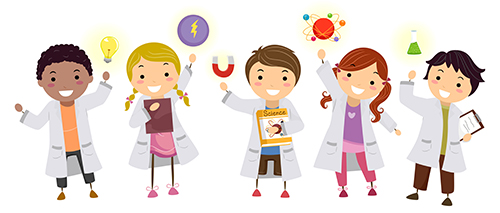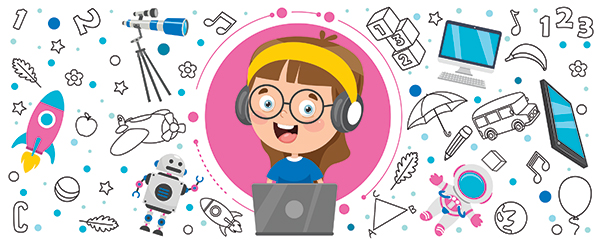How to Test Ideas by Creating Experiments: The Scientific Method (4-7)
This is the grade 4-7 (ages 9-12) version of this lesson. There is also a grades 8+ version on the site.

![]() If you'd like to have someone read this lesson for you, click play below.
If you'd like to have someone read this lesson for you, click play below.
Collecting information isn’t the only way to know if an idea is true. Another way is to test the idea using the scientific method. It's called the scientific method, but it's not just for science! This method can be used for other subjects and problems, too.
What is the scientific method?
One way to find out if something is true is to come up with a way to test it. By testing something, we can see if it is right, or wrong, or maybe even partly right. There are six steps to the scientific method. Let’s use the story about pencils as an example.

1 - Make note of a problem

What are you trying to figure out? In our example, we want to know if pencils can cause lead poisoning.
2 - Turn the problem into a question

Asking your problem as a question will help you to understand it better. “Are the cores in pencils safe? Can using pencils make you sick?”
3 - Answer your question with your best guess, called a hypothesis

Think of a possible answer to the question in step 2. This is what you are testing. In our example, it might be: “Pencil lead is not made out of lead. Pencils cannot cause lead poisoning and make you sick.”
This guess is also known as a hypothesis.
4 - Test your question by doing an experiment

Think of a way to test your question. The test must give an answer to the question in step 2.
Make sure your test is safe. We don’t want anyone to get hurt! In our case, we don’t want people to scratch themselves with a pencil. Instead, you could test what the pencils are made from.
Your test could be: “Test or find out the materials in pencils, to see if they contain any lead.”
This test is also known as an experiment.
5 - Look at your findings

After your experiment is done, decide if your hypothesis was right.
What were the results? Can you explain them?
Perhaps findings can be shown in pie charts, graphs, bar charts or other ways.
In our case, we might find that none of the pencils we tested had lead in them.
6 - Make a conclusion, then repeat and repeat and repeat...

Now that you have looked at the results of your experiment, it’s time to make a conclusion. In our case, it might be: “We checked the materials in many pencils and found that there was no lead. This means you can’t get lead poisoning from pencils.”
But that’s not where it ends! After you make a conclusion, it’s important to start the whole scientific method all over again. Do you now have a new question based on what you saw? Or maybe you have a new hypothesis? It’s important to keep asking questions and to keep testing.
For example, now you might want to find out if the materials in pencils are safe, even if they do not contain lead. Look at tests others have done on pencils, and let other people do your test, too!
Doing each experiment over and over again is what makes the scientific method work so well. When many people get the same results from doing the same tests, then you can trust the conclusions (such as “Lead pencils are safe”).

Here is an activity to check your understanding of the scientific method.
All lessons & quizzes are free!
This was just one of the lessons in our Critical Thinking section. There are over 500 lessons on Kids Boost Immunity just like this one on a variety of subjects. Each lesson includes a quiz and every time a student scores 80% or higher on a quiz, we will donate life-saving vaccines to UNICEF Canada. Sign up now!





